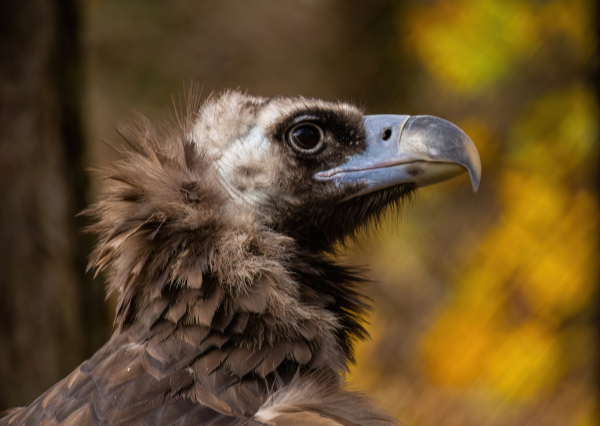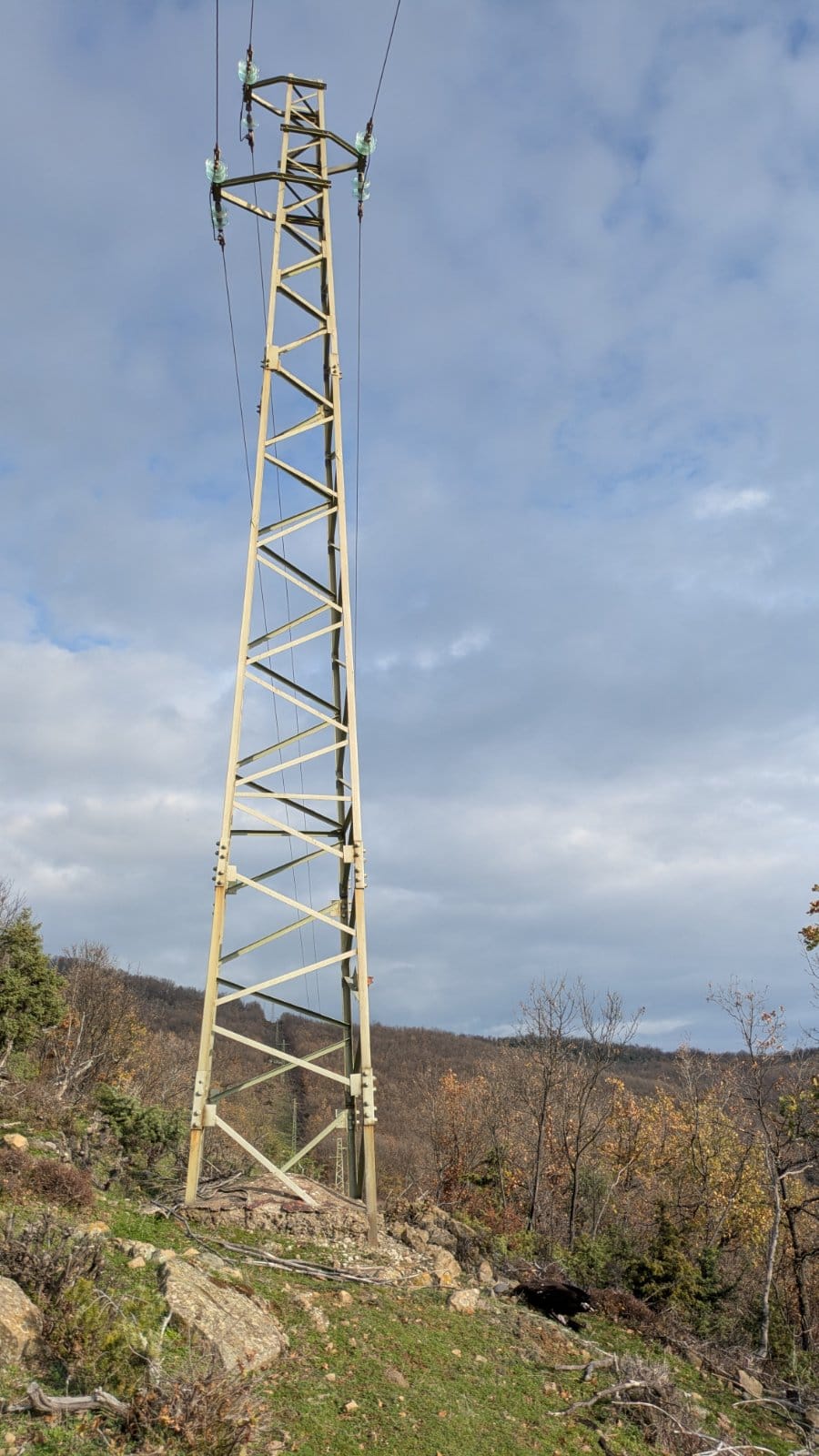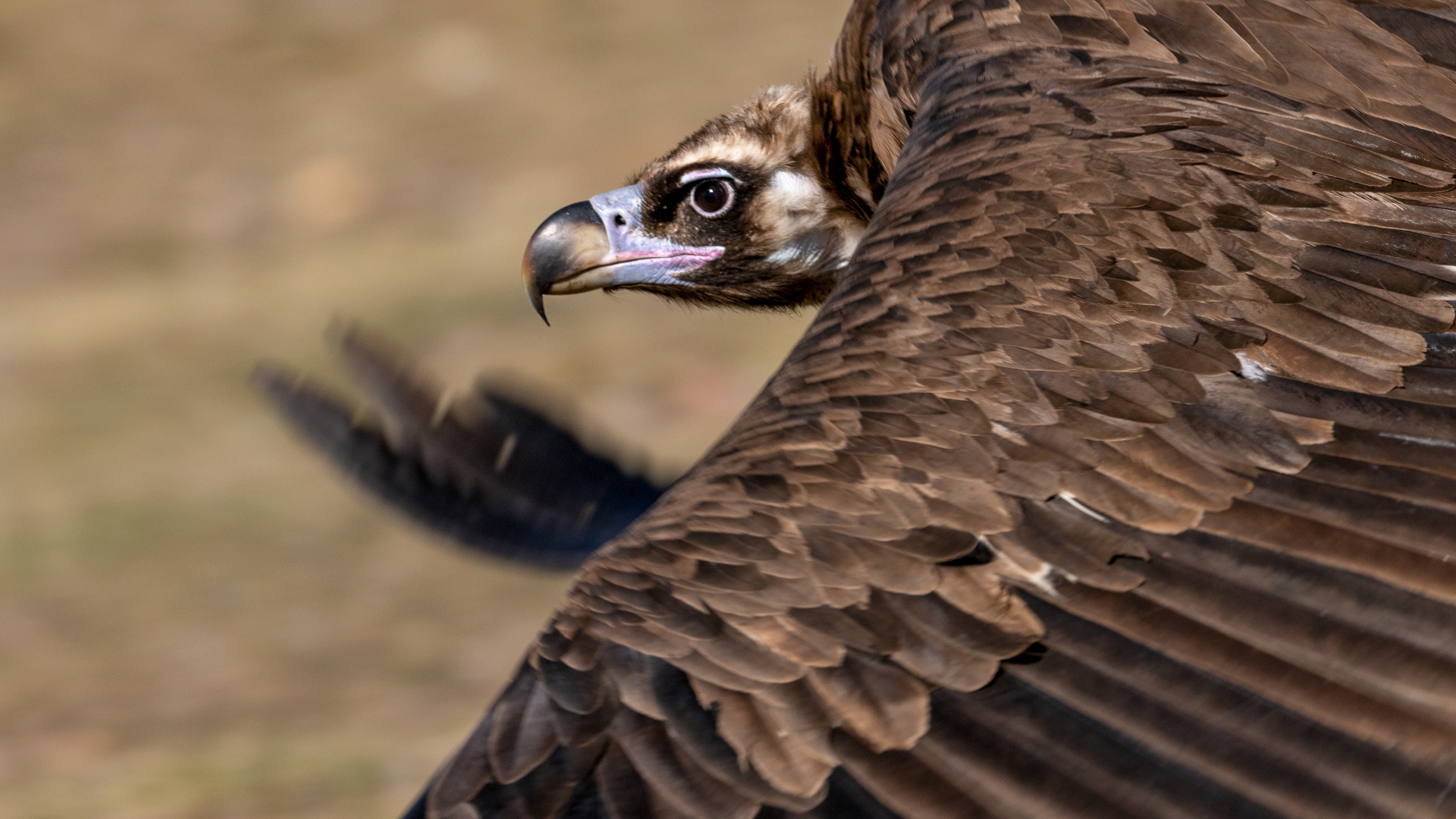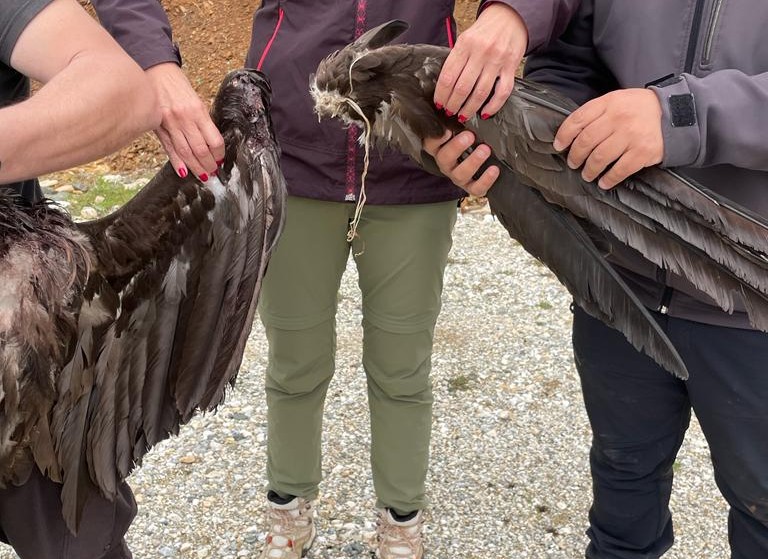A long recovery required three rehabilitation centres and several veterinary interventions
Firstborn vulture
Pousio is the first known offspring of the most recent Cinereous Vulture (Aegypius monachus) colony in Portugal, discovered in June 2024 at Herdade do Monte da Ribeira (HMR), in Vidigueira, Southern Portugal.
On 19 July of that year, it was ringed, fitted with a GPS/GSM transmitter, and biological samples were taken. Blood analysis revealed it to be a young male, who was then named Pousio. Remote monitoring showed that he started flying on 4 September, remaining strongly faithful to the territory of his home colony.
However, his days of freedom were tragically cut short.
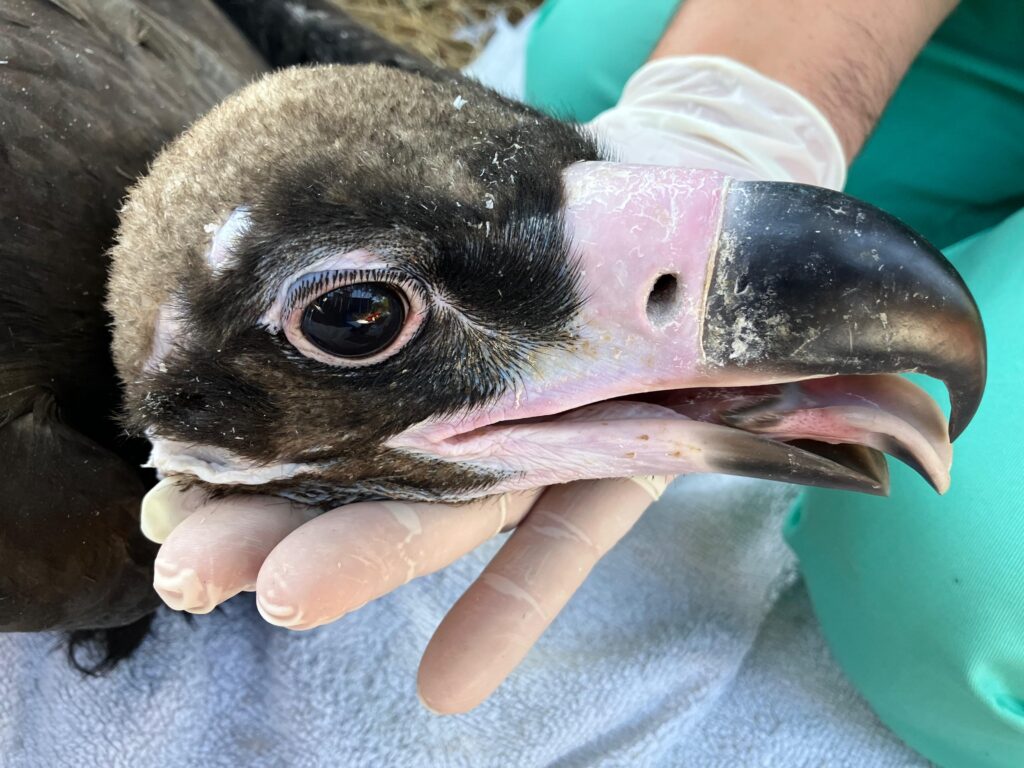
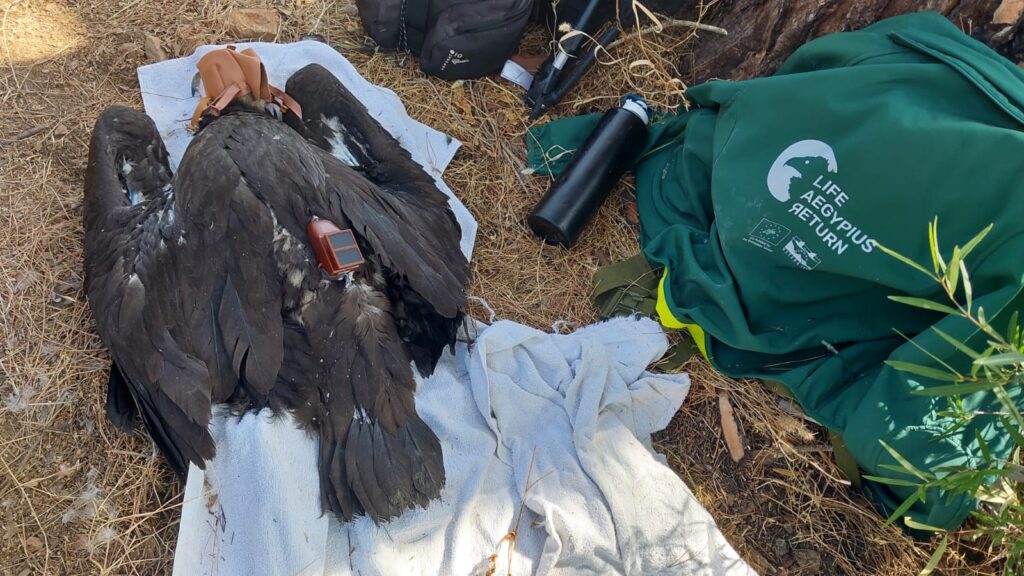
Gunshot victim
On 31 January 2025, HRM employees found Pousio on the ground, prostrate and behaving strangely. They immediately contacted the ICNF (Institute for Nature Conservation and Forests), which promptly collected the bird and delivered it to the LxCRAS (Lisbon Wildlife Rehabilitation Centre).
The veterinary assessment and examinations, including X-rays, left no doubt: Pousio had been shot in the back while perched on a treetop. A detailed analysis of the movements recorded by the GPS/GSM transmitter showed that the shot was likely fired in the early hours of Sunday 26 January.
The number of pellets found confirmed both the intentionality and the proximity of the shot: 16 pellets and fragments in one leg, six in the other, and another lodged in the pectoral muscle – an act that sparked outrage and condemnation among authorities and organisations linked to nature conservation and hunting. The injuries required several veterinary interventions, including surgery for the permanent removal of a claw.
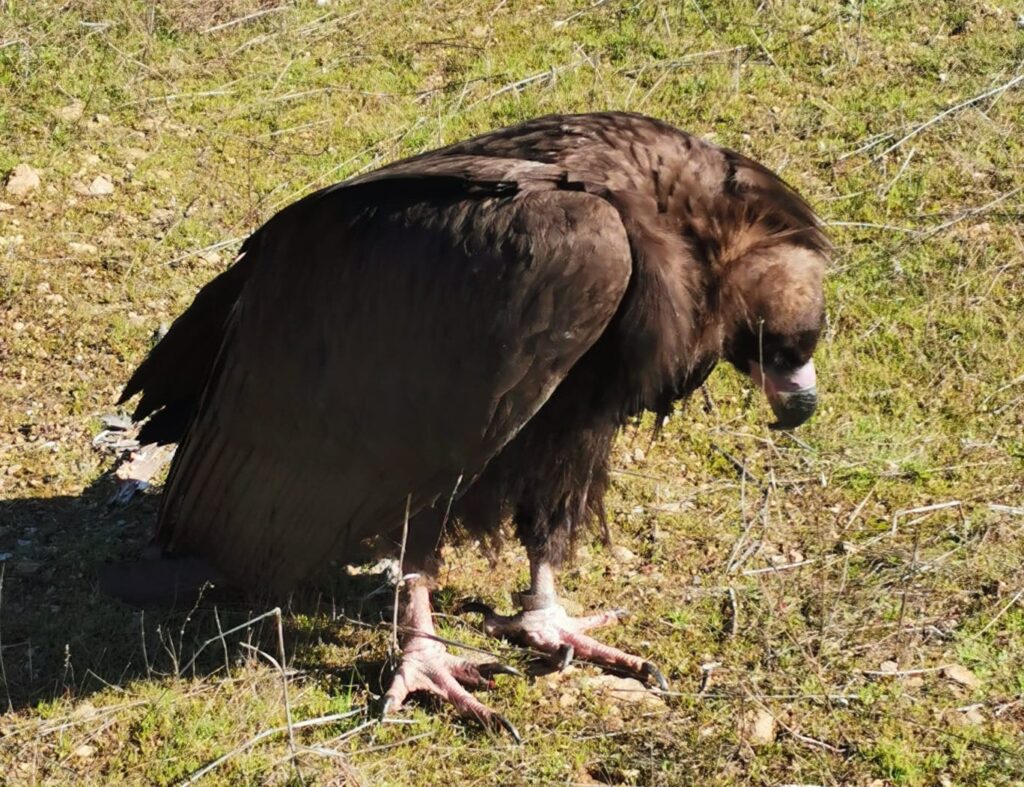
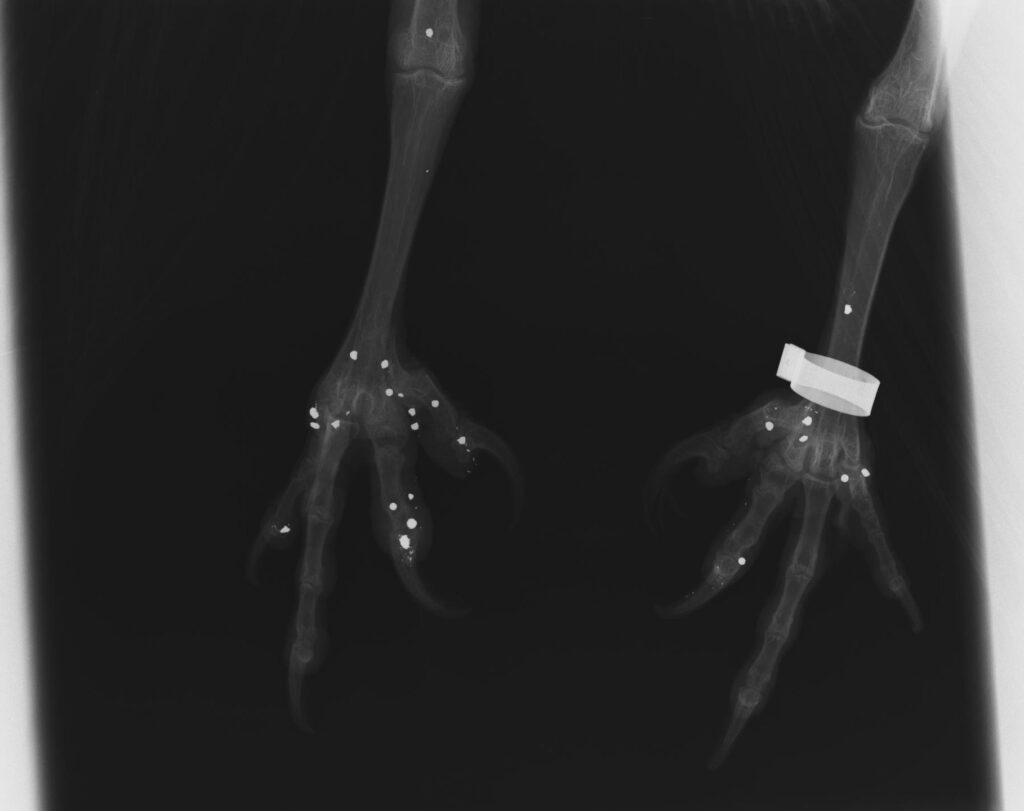
A long and painful recovery
Despite all the care provided by the LxCRAS team, Pousio continued to suffer from problems in the joint of the most affected leg and required a new intervention, which demanded additional technical resources. The Portuguese network of Wildlife Rehabilitation Centres was then activated, and it was decided to transfer Pousio to the Veterinary Hospital of the University of Trás-os-Montes and Alto Douro (CRAS HV-UTAD).
After the new intervention and the respective recovery period, Pousio was transferred to CIARA, where he completed his flight training and an early moult. Finally, after eight long months, Pousio was fully rehabilitated and ready to return to his natal colony.
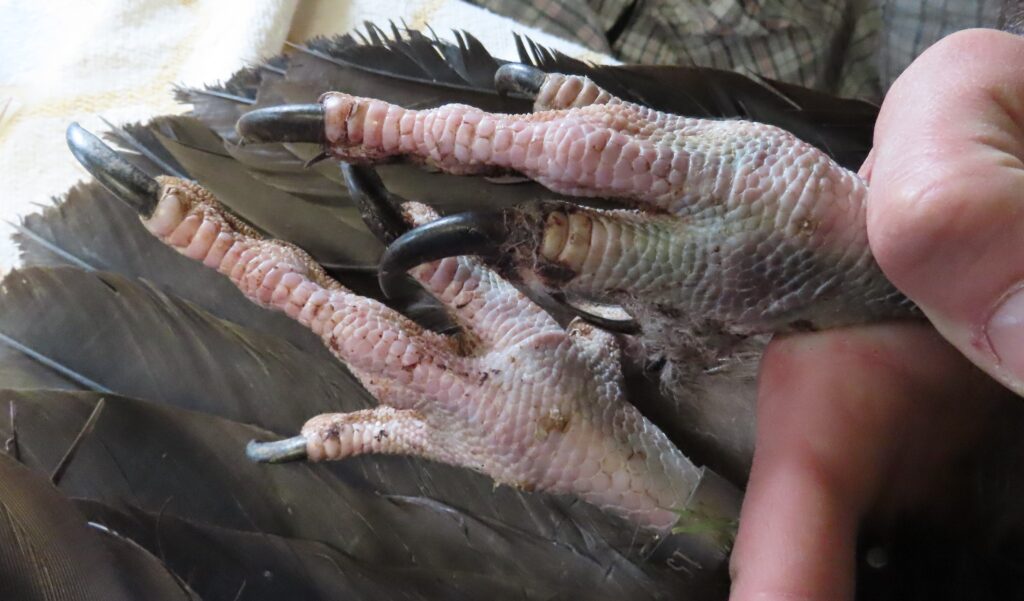
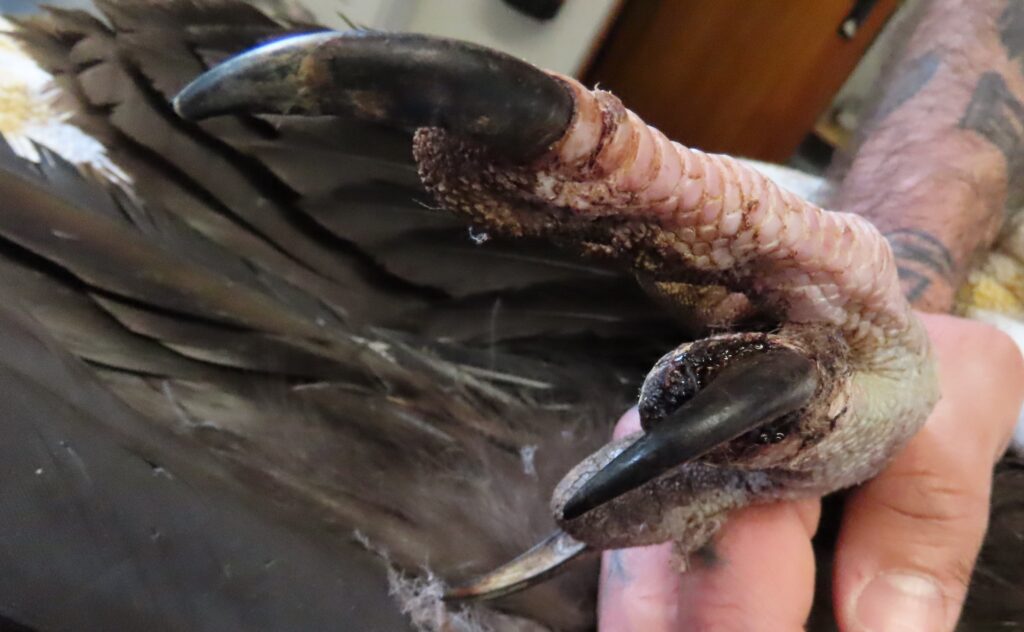
An emotional return to freedom
Pousio’s recovery, and the tremendous effort dedicated to his rehabilitation, were celebrated in an awareness-raising event held at HMR, which brought together around 40 participants. During the session, the projeto LIFE Aegypius Return project was presented and PousioI’s brave journey was shared. The process of discovering the Serra do Mendro colony – which now extends to the municipalities of Vidigueira and Portel – was also explained, as were the monitoring efforts made by the LPN (League for the Protection of Nature), with the support of the ICNF. The event further highlighted the threats facing this colony, especially due to the expansion of renewable energy projects.
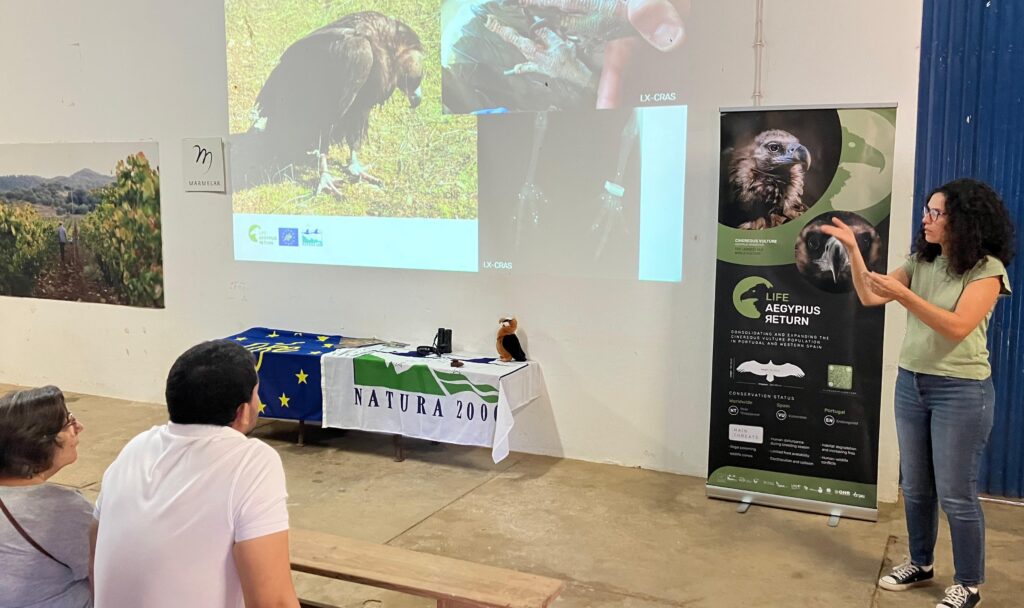
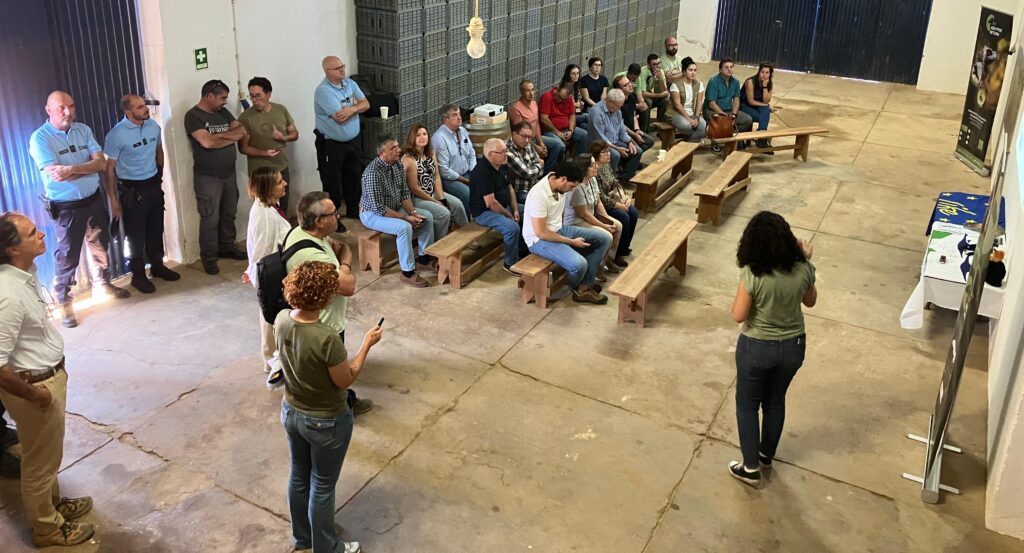
Pousio was then released. After some hesitation, he thrilled those present with a graceful inaugural flight. That same day it flew all over the Serra do Mendro, rediscovering his “home”, to which he has since remained faithful.
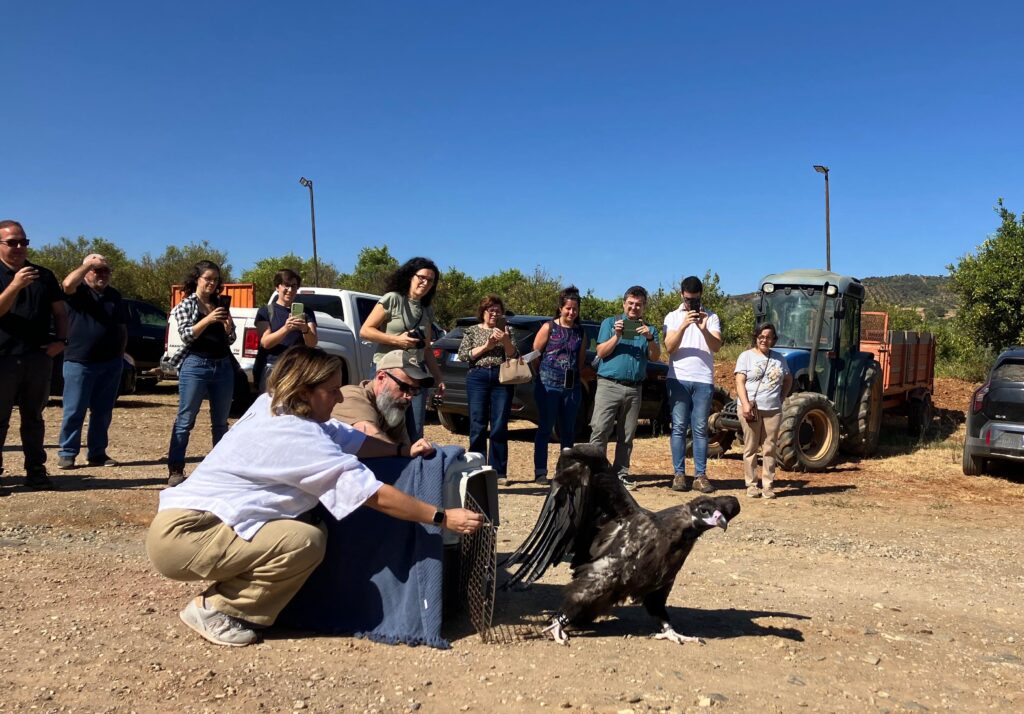
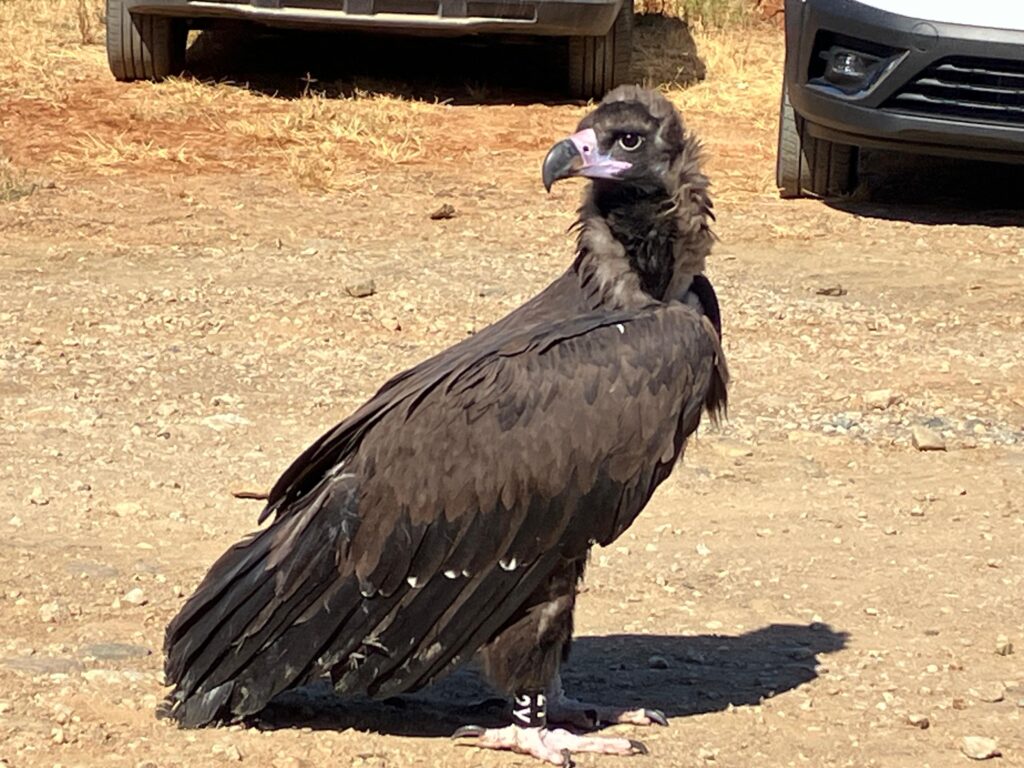
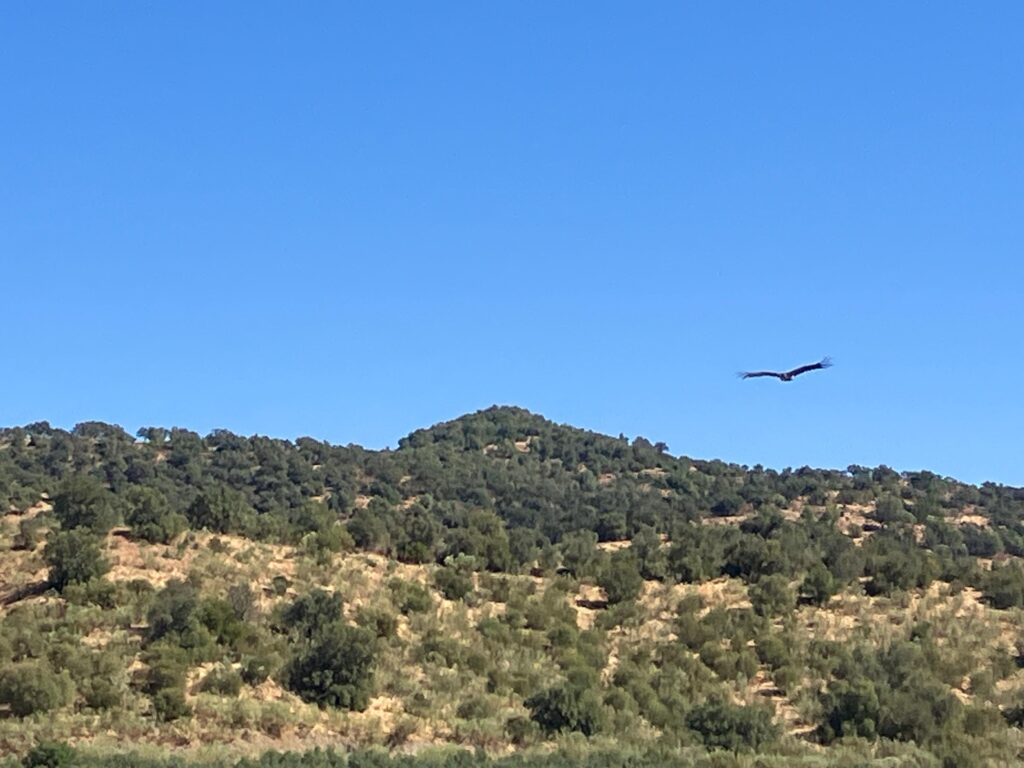
The release was followed by a demonstration of a preventive patrol carried out by the Canine Intervention Group of the National Republican Guard (GIC/GNR), as part of their anti-poisoning work.

The event ended with a tasting of regional products – all produced in areas hosting Cinereous Vulture colonies – including HMR’s olive oils and wines.
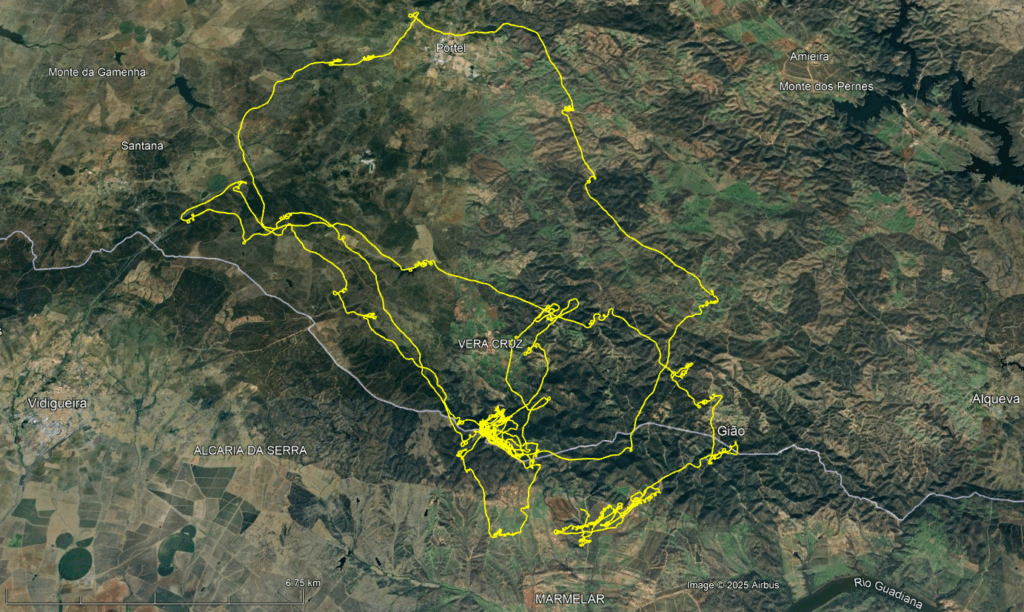
Acknowledgements
The recovery of the Pousio was only possible thanks to the dedication of many people and organisations. From HMR in the detection and alert, to ICNF in the rescue and transport, to the teams of the rehabilitation centres LxCRAS, CRAS HV-UTAD and CIARA, tireless in the care provided to Pousio.
The partners of the LIFE Aegypius Return project wish to thank HMR for all the support given in monitoring and protecting the Cinereous Vulture in the region, as well as for the hospitality in hosting the celebratory event. Together, they also extend their thanks to all those present, in particular: ICNF; LxCRAS; GNR (GIC e Núcleo de Proteção Ambiental do Destacamento Territorial de Beja); LPN; VCF – Vulture Conservation Foundation; ANPC – Associação Nacional de Proprietários Rurais; Associação de Caça, Tiro e Pesca de Marmelar; Federação Alentejana de Caçadores; Município de Vidigueira; Junta de Freguesia de Pedrógão; Associação BioLiving; Direção-Geral da Alimentação e Veterinária – Núcleo de Alimentação e Veterinária de Reguengos de Monsaraz; and municipal vets from the region.
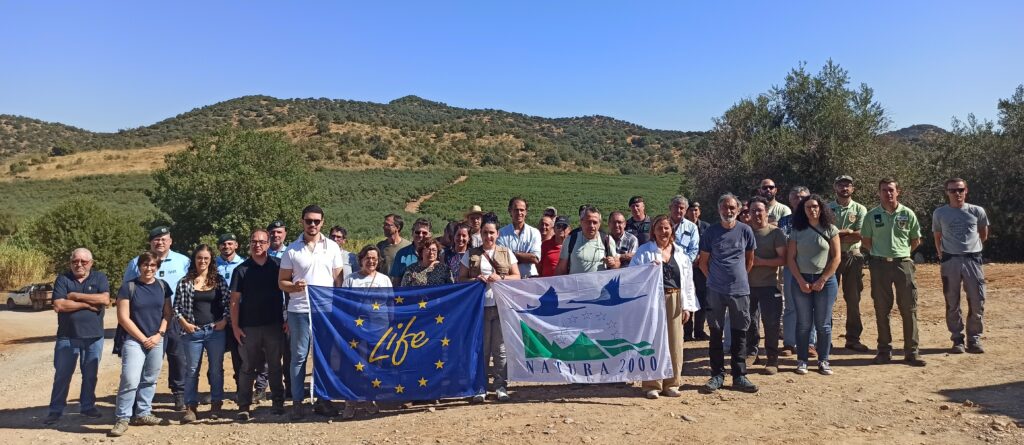
About LIFE Aegypius Return

O projeto LIFE Aegypius Return é cofinanciado pelo programa LIFE da União Europeia.O seu sucesso depende do envolvimento de todos os stakeholders relevantes, e da colaboração dos parceiros: a stakeholders, and the collaboration of the partners: the Vulture Conservation Foundation (VCF)beneficiário coordenador, e os parceiros locais Palombar – Conservação da Natureza e do Património Rural, Herdade da Contenda, Sociedade Portuguesa para o Estudo das Aves, Liga para a Protecção da Natureza, Associação Transumância e Natureza, Fundación Naturaleza y Hombre, Guarda Nacional Republicana e Associação Nacional de Proprietários Rurais Gestão Cinegética e Biodiversidade.

